What Is Digital Marketing Strategy?
A digital marketing strategy is a comprehensive plan that outlines how businesses leverage digital platforms and tools to achieve marketing objectives. It combines various digital channels, methods, and resources to create cohesive campaigns aimed at engaging target audiences, increasing brand awareness, driving traffic, and boosting conversions.
Key Takeaways
- Integrated Approach: Digital marketing strategy integrates multiple channels to create a unified message.
- Data-Driven: Success depends on analyzing metrics and adapting strategies based on performance data.
- Dynamic Evolution: Strategies must be flexible to adapt to evolving technology and consumer behavior.
Understanding Digital Marketing
Digital marketing involves promoting products or services through digital channels. Unlike traditional methods, it focuses on online platforms like websites, social media, search engines, and email to connect with customers in a measurable and targeted way.
What Is Digital Marketing?
Digital marketing encompasses various online techniques such as SEO, social media marketing, and email campaigns. It aims to:
- Reach a global audience.
- Deliver personalized experiences.
- Provide measurable ROI.
How Digital Marketing Works
Digital marketing relies on multiple tools and platforms to execute campaigns effectively:
- Target Audience: Understanding the demographics, preferences, and behavior of potential customers.
- Channels: Utilizing platforms like search engines, social media, email, and websites.
- Content: Crafting compelling and engaging materials to capture attention.
- Analytics: Using data to measure the success of campaigns and optimize performance.
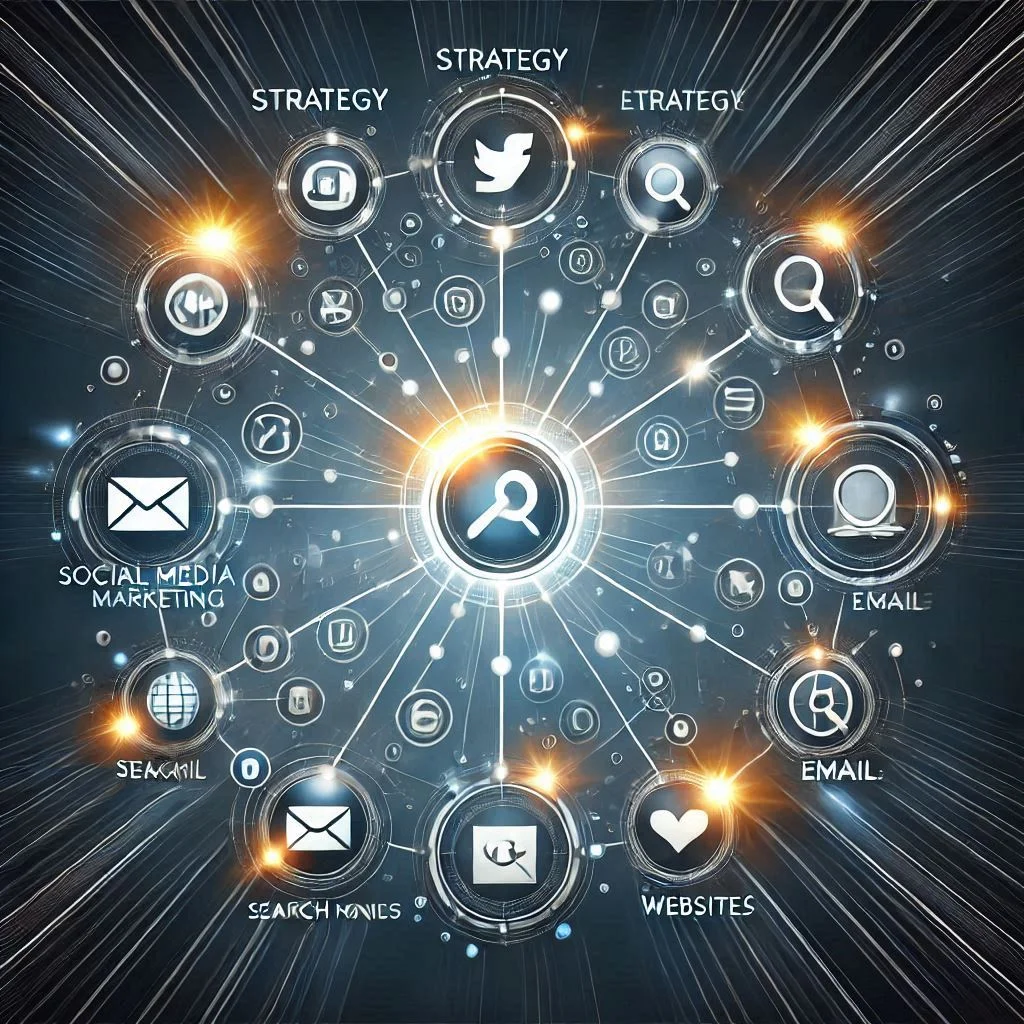
Types of Digital Marketing Channels
Digital marketing strategies thrive on using diverse channels to target audiences. Here are the most significant ones:
Website Marketing
Your website is your brand’s digital storefront. It’s crucial to optimize it for user experience, SEO, and conversion. Features of effective website marketing include:
- Responsive Design: Ensures compatibility with all devices.
- SEO Optimization: Helps rank higher in search results.
- Engaging Content: Keeps visitors interested and encourages actions.
Pay-Per-Click Advertising
PPC involves placing ads on search engines and other platforms where you pay only when a user clicks your ad. Benefits include:
- Immediate Results: Generate traffic quickly.
- Targeted Audience: Tailor ads for specific demographics and interests.
- Cost Control: Set budgets to manage spending.
Content Marketing
Content marketing focuses on creating valuable, relevant content to attract and retain audiences. Strategies include:
- Blogs: Informative articles that drive organic traffic.
- Ebooks and Whitepapers: In-depth resources for lead generation.
- Infographics: Visually engaging summaries of complex topics

Email Marketing
Email remains a powerful tool for direct communication. Best practices include:
- Segmentation: Target specific groups for personalized messages.
- Automated Campaigns: Streamline repetitive tasks.
- Engaging Subject Lines: Boost open rates.
Social Media Marketing
Platforms like Facebook, Instagram, and LinkedIn are essential for reaching diverse audiences. Key strategies:
- Content Scheduling: Maintain consistency.
- Engagement: Respond to comments and messages promptly.
- Paid Ads: Amplify reach with targeted promotions.
Affiliate Marketing
Affiliate marketing involves partnering with influencers or websites to promote your products for a commission. Advantages:
- Low Risk: Pay only for performance.
- Wider Reach: Tap into the affiliate’s audience.
Video Marketing
Videos are an engaging way to communicate your brand’s story. Effective methods include:
- Product Demonstrations: Showcase features and benefits.
- Live Streams: Connect in real-time.
- Tutorials: Educate and inform your audience.
Text Messaging
SMS marketing provides direct and immediate communication with customers. Tips for success:
- Short and Clear Messages: Respect the recipient’s time.
- Personalization: Address users by name.
- Call-to-Action: Encourage immediate responses.

Understanding Digital Marketing Strategy
A Digital Marketing Strategy is an organized plan to promote and grow a brand or business online. It focuses on using various online tools and platforms to connect with the audience, build relationships, and drive conversions. When combined with On-Page SEO techniques, a digital marketing strategy can help a website rank higher on Google and increase organic traffic. Below is an in-depth guide to key components of digital marketing strategy, with a focus on how they contribute to SEO success.
1. Goal Setting for Digital Marketing Strategy
Before launching any digital marketing initiative, defining clear and measurable goals is crucial. Goals can include increasing website traffic, improving conversions, enhancing brand visibility, or growing an email list. These goals should align with the overall business objectives, and each goal must be measurable to track progress.
Try out our free AI Content Generator that can help you for marketing improvements.
How SEO Fits In:
- SEO Goal Alignment: Set SEO-specific goals such as increasing organic search traffic by 20% in the next six months, improving keyword rankings for targeted queries, or getting more backlinks to enhance domain authority.
- On-Page SEO Focus: Each goal should be aligned with specific On-Page SEO tactics such as optimizing page titles, meta descriptions, headers, and improving content quality.
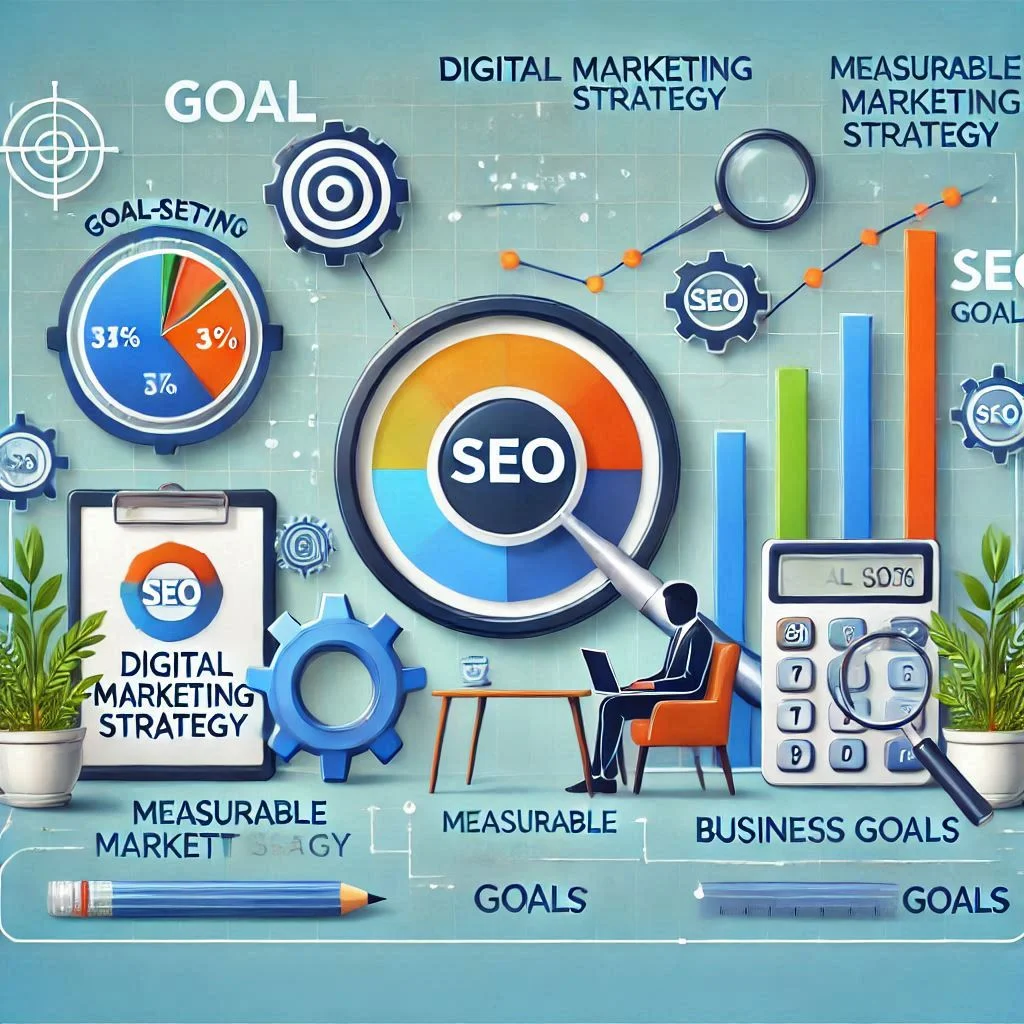
2. Audience Research and Analysis
Understanding your target audience is one of the most important steps in crafting a successful digital marketing strategy. Knowing your audience’s preferences, pain points, and behaviors can help you create tailored content and choose the right platforms to promote your products or services.
How SEO Fits In:
- Keyword Research: Use tools like Google Keyword Planner or SEMrush to identify search terms your target audience uses. This helps you select the right keywords for your On-Page SEO optimization.
- User Intent: Understanding the intent behind keywords (informational, transactional, or navigational) can guide you in creating content that satisfies the needs of your audience.
- Competitor Analysis: Review competitors’ websites for keyword opportunities, backlink strategies, and content gaps.
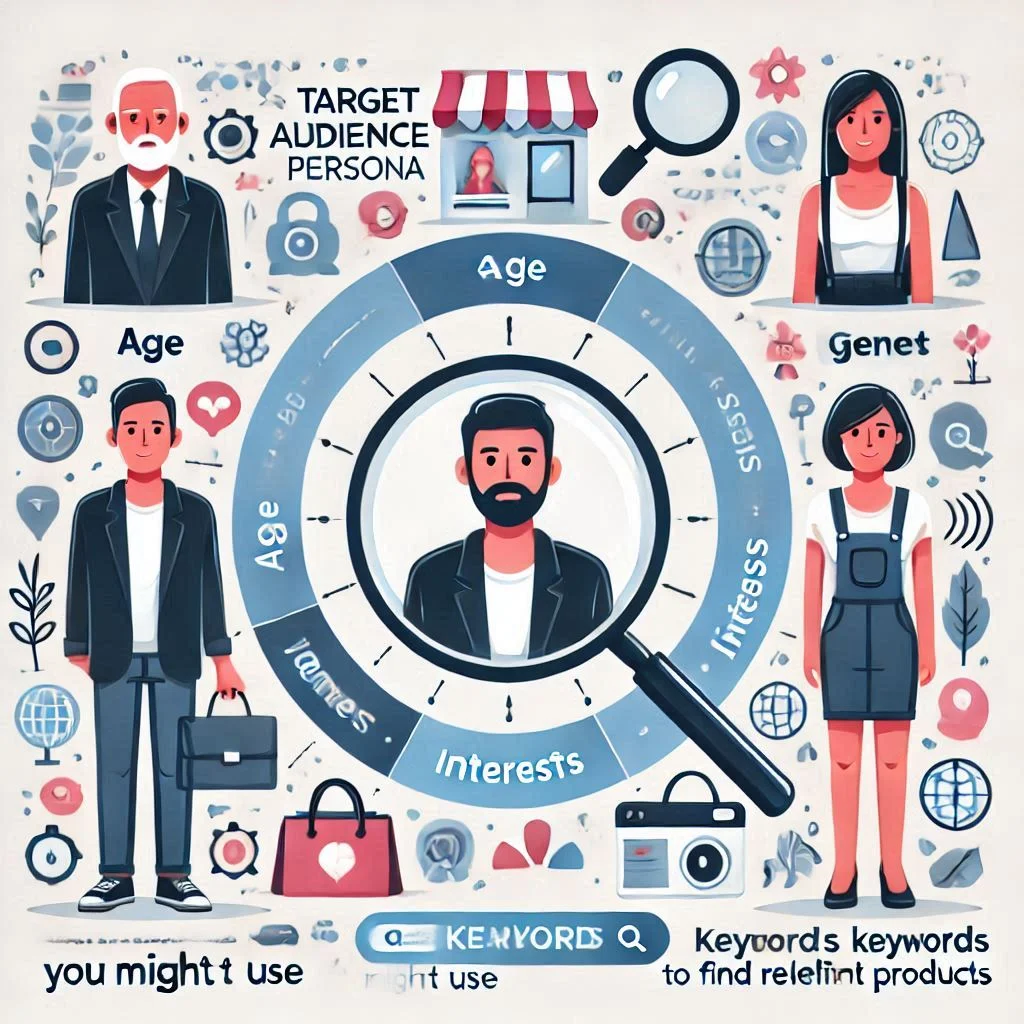
3. Platform Selection for Digital Marketing
After audience research, selecting the right digital marketing platforms is vital. This could include social media (Facebook, Instagram, LinkedIn), search engines (Google), websites, and more. The goal is to ensure that marketing efforts reach the right audience on the right platform.
How SEO Fits In:
- On-Page Optimization for Platform Relevance: Each platform has its own SEO requirements. For instance, YouTube SEO involves optimizing video titles and descriptions, while Google SEO focuses on optimizing website pages and blogs.
- Mobile Optimization: With Google’s mobile-first indexing, ensuring that your website is mobile-friendly improves your ranking in search results. This involves making your site responsive, fast-loading, and easy to navigate on mobile devices.
- Local SEO: For businesses targeting local audiences, ensure that your content includes local keywords and your website has accurate location information.

4. Content Creation and Optimization
Creating high-quality, relevant, and engaging content is the backbone of any digital marketing strategy. Content includes blogs, articles, videos, social media posts, and product descriptions. This content must align with the interests and needs of your target audience.
How SEO Fits In:
- On-Page SEO for Content: Each piece of content should be optimized with primary and secondary keywords. Use these keywords in the title, headers (H1, H2), body content, image alt text, and URLs.
- Content Length and Structure: Longer, in-depth content (over 1,000 words) tends to rank better on Google. Break content into digestible sections using H2 and H3 headers, bullet points, and images.
- Internal Linking: Link to other pages or blog posts within your website to encourage visitors to explore more content and improve the SEO ranking of those pages.

5. Performance Tracking and Optimization
Continuous monitoring of the performance of your digital marketing efforts is necessary to ensure your strategy is on track. This includes tracking SEO performance, conversions, and traffic metrics. Google Analytics, Google Search Console, and SEO tools like Moz and Ahrefs can be used for this purpose.
How SEO Fits In:
- SEO Performance Metrics: Regularly check keyword rankings, organic traffic, bounce rate, and page speed.
- A/B Testing: Use A/B testing for title tags, meta descriptions, and content to see which performs better in search results.
- Backlink Analysis: Monitor the growth of backlinks to your site. Backlinks are a critical ranking factor for Google.
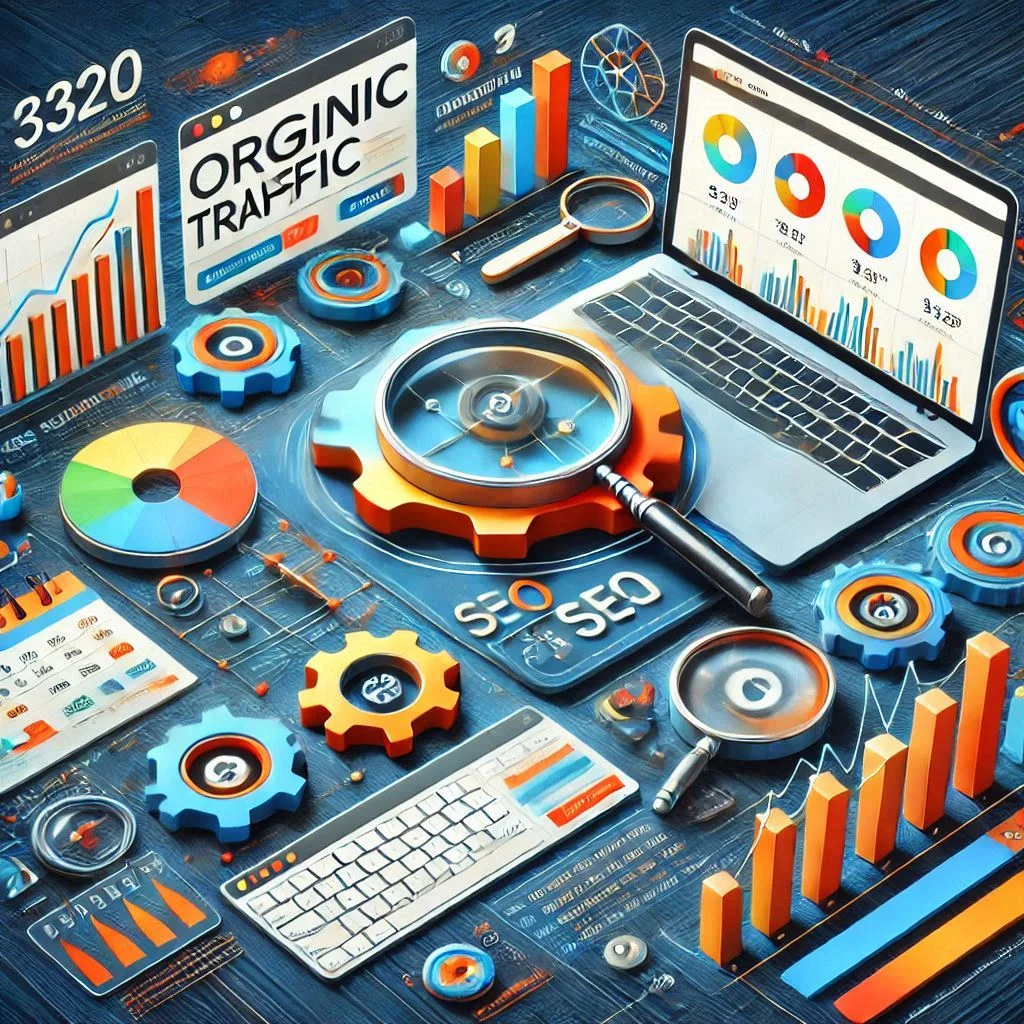
6. On-Page SEO Techniques for Higher Google Ranking
On-Page SEO plays a crucial role in making sure that your digital marketing efforts lead to higher rankings on Google. Here’s a closer look at the most effective On-Page SEO techniques:
- Title Tags: Use descriptive and keyword-optimized title tags that clearly describe the page content. Ensure they are under 60 characters.
- Meta Descriptions: Write compelling meta descriptions that summarize the content and include targeted keywords. Keep them under 160 characters.
- Header Tags (H1, H2, H3): Use header tags to structure content for both readability and SEO. The H1 tag should be used for the main title of the page, and H2/H3 for subheadings.
- Image Optimization: Use alt text that includes relevant keywords for each image on your site. Compress images to reduce page load times.
- URL Structure: Create SEO-friendly URLs that are short, descriptive, and include relevant keywords.
The Evolution of Digital Marketing Strategies
Digital marketing has transformed significantly over the years, shaped by technological advancements and shifting consumer preferences. This evolution provides insights into how businesses can adapt to stay competitive in a dynamic landscape.
Early Approaches to Digital Marketing
In the early stages, digital marketing was limited in scope and primarily relied on rudimentary tools and techniques.
- Email Marketing: The first widespread digital marketing tool. Brands used email to distribute newsletters and promotional messages, often in a one-size-fits-all format.
- Static Banner Ads: Early websites displayed static banner advertisements to attract users. While they increased visibility, they lacked interactivity and personalization.
- Basic SEO Practices: Search engines like Yahoo and AltaVista ranked content based on simple keyword optimization. Marketers focused on keyword stuffing, which often sacrificed quality for rankings.
- Limited Analytics: Marketers had little to no tools for measuring campaign performance or user engagement effectively.
Key Challenges: A lack of advanced analytics and reliance on generic marketing approaches limited the effectiveness of these strategies.
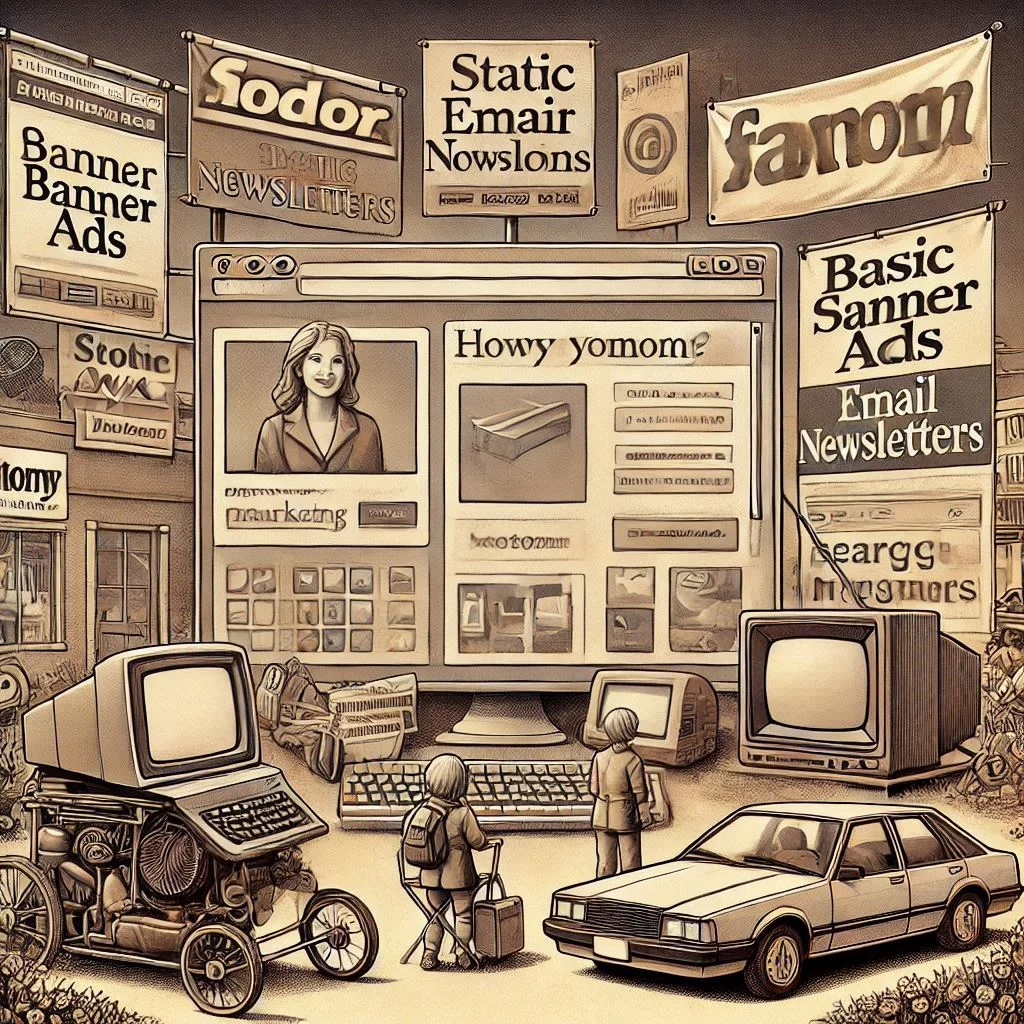
Impact of Technological Advancements
The rise of sophisticated tools and platforms in the mid-2000s revolutionized digital marketing, making it more effective and consumer-focused.
- Search Engine Advancements: Google’s algorithm updates prioritized user experience, quality content, and mobile-friendliness. This shift made SEO more dynamic and focused on value-driven content.
- Social Media Platforms: The emergence of Facebook, Twitter, and Instagram transformed how brands interacted with audiences. Social platforms enabled real-time engagement and community building.
- Data-Driven Marketing: Tools like Google Analytics provided actionable insights, enabling businesses to track user behavior and campaign performance.
- Content Marketing Growth: High-quality blogs, videos, and infographics became central to attracting and retaining audiences. Storytelling emerged as a powerful marketing tool.
- Automation Tools: Platforms like HubSpot and Mailchimp automated repetitive tasks, improving efficiency and campaign consistency.
Key Benefits: Increased audience reach, better engagement, and precise targeting based on user behavior and preferences.
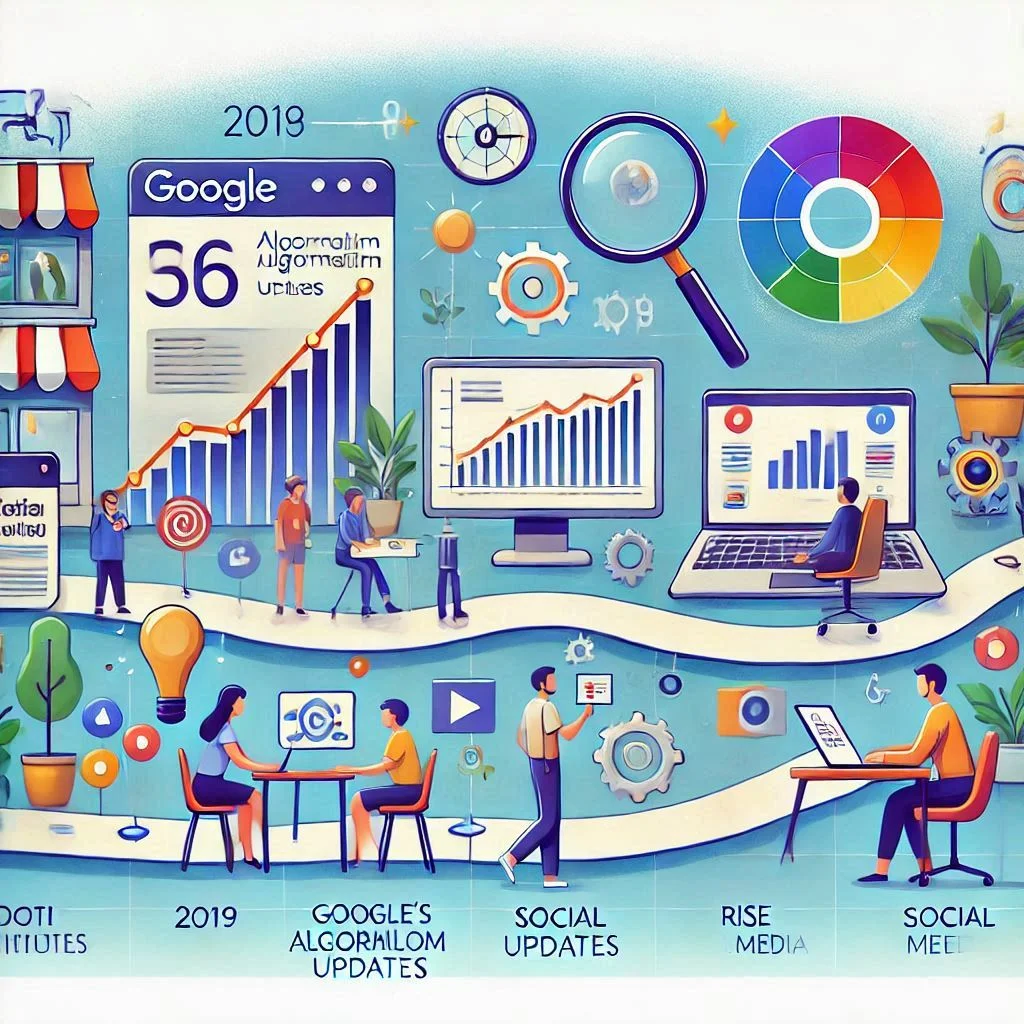
Emerging Trends Shaping the Future
As technology continues to advance, new trends are redefining the digital marketing landscape. Staying ahead of these trends is essential for future success.
- Artificial Intelligence (AI): AI tools like chatbots, predictive analytics, and automated content creation are making marketing more personalized and efficient.
- Voice Search Optimization: The popularity of voice assistants like Alexa and Google Home requires content optimized for conversational and question-based queries.
- Interactive and Immersive Content: Augmented Reality (AR), Virtual Reality (VR), and interactive tools like polls and quizzes captivate audiences by offering engaging experiences.
- Sustainability Marketing: Consumers prefer brands with a commitment to environmental and social responsibility. Highlighting eco-friendly practices is becoming a key strategy.
- Short-Form Videos: Platforms like TikTok and Instagram Reels emphasize snackable video content to capture attention quickly.
- Blockchain and Transparency: Blockchain technology is improving ad spend accountability and reducing fraud in digital advertising.
Key Opportunities: Embracing these trends can enhance brand credibility, improve user engagement, and ensure competitive positioning.
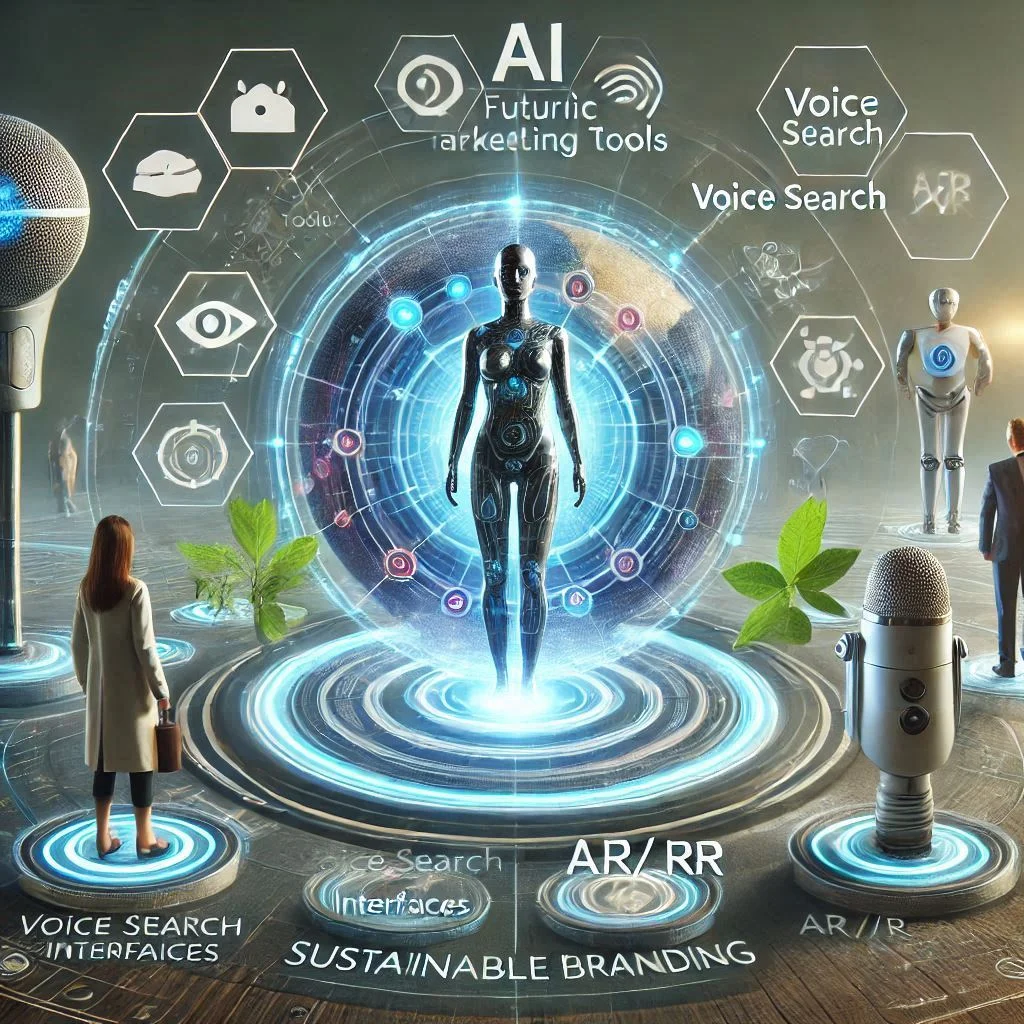
How to Future-Proof Your Digital Marketing Strategy
Future-proofing your digital marketing strategy ensures your business remains adaptable and competitive in a rapidly changing landscape. By leveraging AI, responding to consumer behavior shifts, and staying ahead with emerging technologies, businesses can build resilience and seize new opportunities.
Leveraging AI and Automation
AI and automation are revolutionizing digital marketing by enhancing efficiency, improving personalization, and enabling scalable campaigns.
- AI-Powered Insights: Tools like machine learning analyze large datasets to predict consumer behavior, optimize ad placements, and suggest data-driven strategies.
- Chatbots and Virtual Assistants: AI chatbots provide 24/7 customer support and drive user engagement by offering tailored responses.
- Automation Tools: Platforms like HubSpot and Zapier streamline repetitive tasks such as scheduling posts, sending emails, and tracking metrics.
- Content Generation: AI tools assist in generating blogs, captions, and ad copy, ensuring consistency and relevance.
Key Benefits: Cost savings, increased efficiency, and the ability to provide highly personalized customer experiences.

Adapting to Consumer Behavior Changes
Understanding and responding to evolving consumer preferences is critical for maintaining relevance and building strong customer relationships.
- Personalization Is Key: Consumers expect experiences tailored to their preferences. Leveraging CRM systems helps in curating content and offers that resonate.
- Omnichannel Presence: Ensure seamless experiences across platforms, from social media to websites, aligning with the shift towards integrated digital journeys.
- Mobile-First Approach: As mobile usage dominates, optimizing content for mobile devices is no longer optional.
- Sustainability and Ethics: Modern consumers are drawn to brands that align with their values, such as sustainability and social responsibility.
Key Benefits: Improved customer satisfaction, increased brand loyalty, and better engagement metrics.
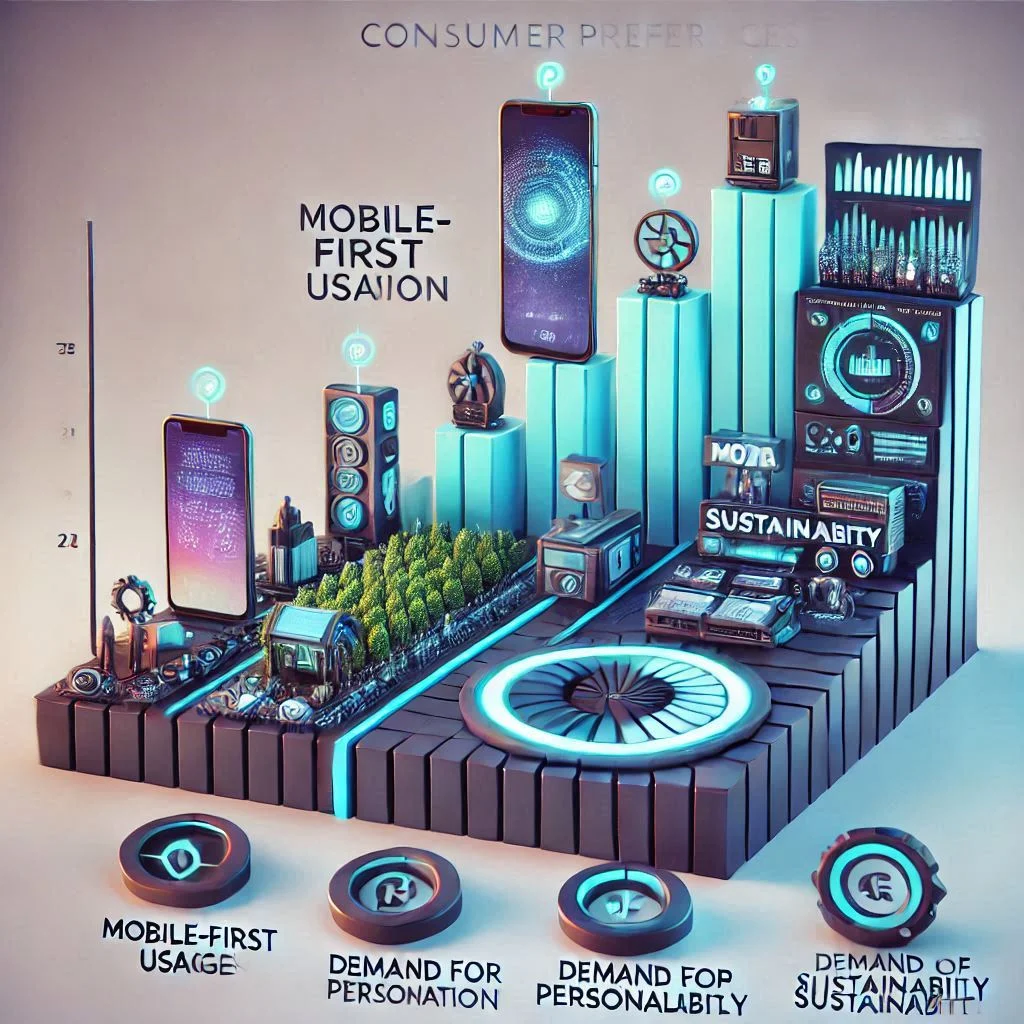
Staying Ahead with Emerging Technologies
Keeping pace with technological innovations allows businesses to stay competitive and captivate audiences with innovative solutions.
- Voice Search Optimization: The growing use of smart devices necessitates optimizing content for voice-based queries.
- Augmented Reality (AR) and Virtual Reality (VR): Interactive experiences like AR product try-ons or VR virtual tours enhance user engagement.
- Blockchain for Transparency: Blockchain technology ensures secure and transparent advertising, combating fraud and increasing trust.
- Internet of Things (IoT): IoT enables hyper-personalized marketing by connecting with smart devices.
- AI-Powered Analytics: Advanced analytics tools predict trends and optimize marketing strategies in real time.
Key Benefits: Strengthened brand positioning, improved customer experiences, and the ability to explore untapped markets.

FAQs About Digital Marketing Strategies
Understanding the nuances of digital marketing strategies is essential for businesses aiming to thrive in the digital age. Here, we address common questions to clarify concepts and provide actionable insights.
What Is Digital Marketing?
Digital marketing refers to the use of online platforms and digital channels to promote products, services, or brands. Unlike traditional marketing, it leverages data, technology, and interactive channels to reach and engage audiences effectively.
Key Components of Digital Marketing:
- Search Engine Optimization (SEO): Enhancing website visibility on search engines.
- Social Media Marketing: Engaging with audiences on platforms like Facebook, Instagram, and Twitter.
- Content Marketing: Creating and sharing valuable content to attract and retain customers.
- Pay-Per-Click (PPC) Advertising: Driving traffic through paid ads on search engines and social media.
- Email Marketing: Sending personalized messages to nurture leads and maintain customer relationships.
Importance: Digital marketing is measurable, cost-effective, and allows for highly targeted campaigns.
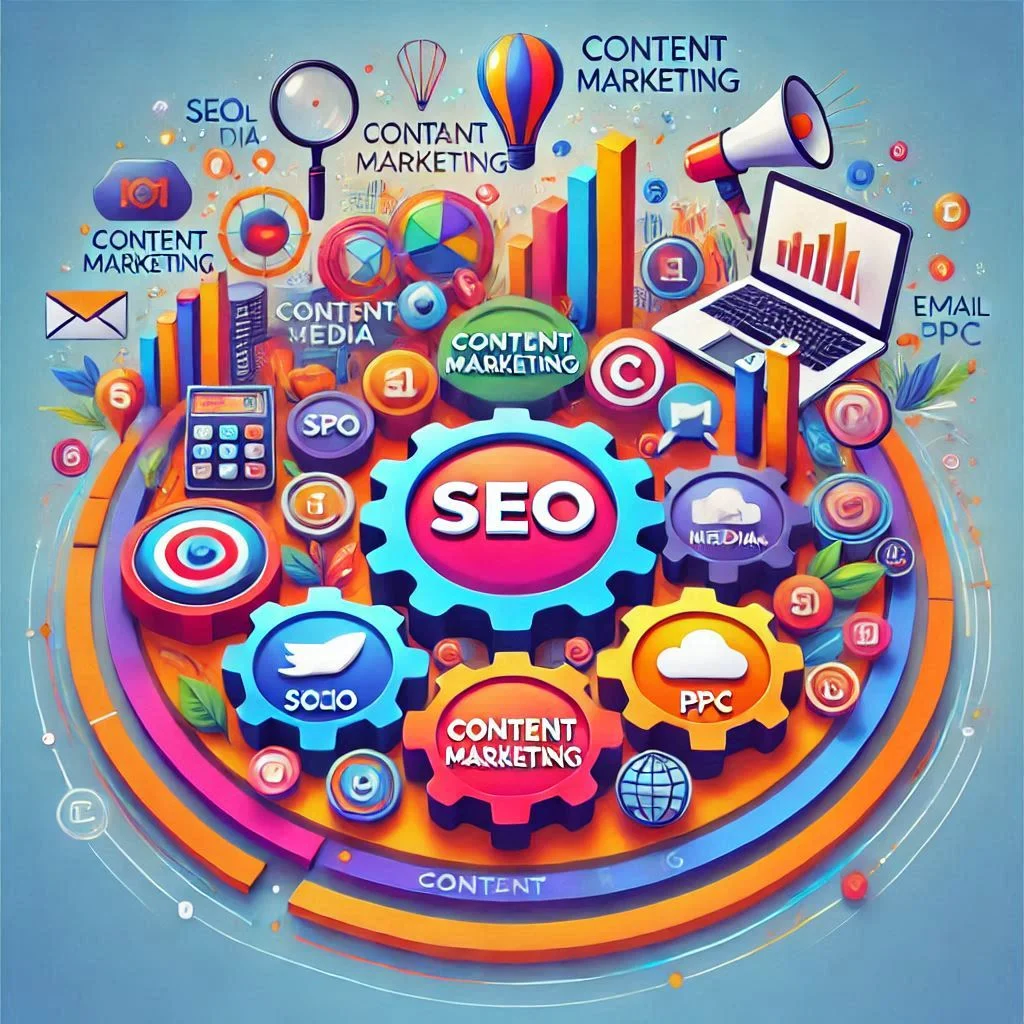
What Is the Most Effective Digital Marketing Strategy?
The most effective digital marketing strategy varies depending on the business type, target audience, and goals. However, a combination of several strategies typically yields the best results.
Key Strategies to Consider:
- Content Marketing: Provides long-term value by educating and engaging audiences.
- Social Media Advertising: Offers precise targeting based on demographics, interests, and behaviors.
- Search Engine Optimization (SEO): Boosts organic traffic and improves credibility.
- Email Marketing: Drives high ROI by nurturing existing customers and converting leads.
Pro Tip: Analyze your audience’s preferences and pain points to determine the best strategies for engagement and conversion.
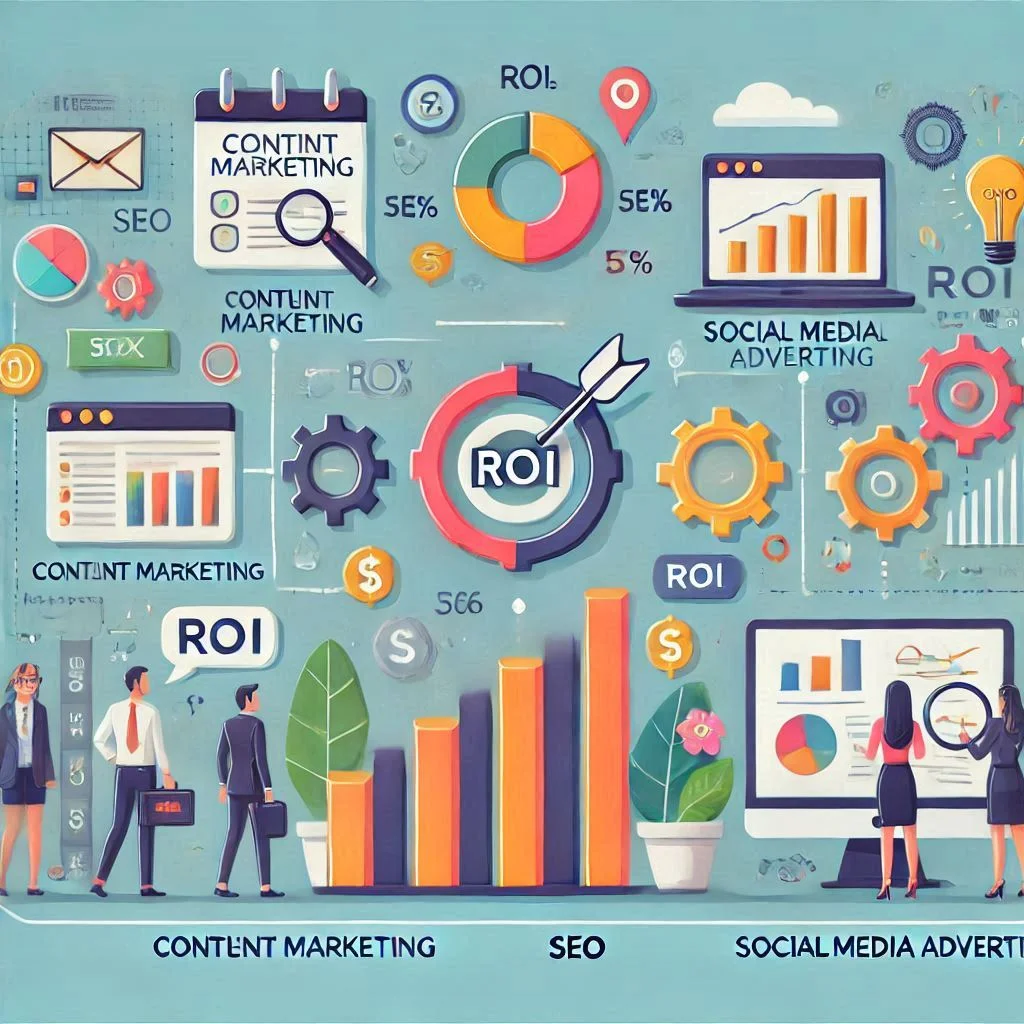
What Is a Digital Marketing Campaign?
A digital marketing campaign is a series of targeted activities designed to achieve specific business goals, such as increasing brand awareness, generating leads, or boosting sales.
Core Elements of a Campaign:
- Objective Setting: Define clear and measurable goals.
- Audience Targeting: Use data to understand and reach the right audience.
- Channel Selection: Choose platforms that align with your audience’s preferences.
- Content Creation: Develop engaging and relevant content.
- Performance Tracking: Monitor metrics to optimize the campaign.
Example: A holiday-themed email marketing campaign that includes discounts, personalized messages, and call-to-action buttons.
Why It Matters: Campaigns ensure coordinated efforts and measurable outcomes, leading to higher efficiency and ROI.
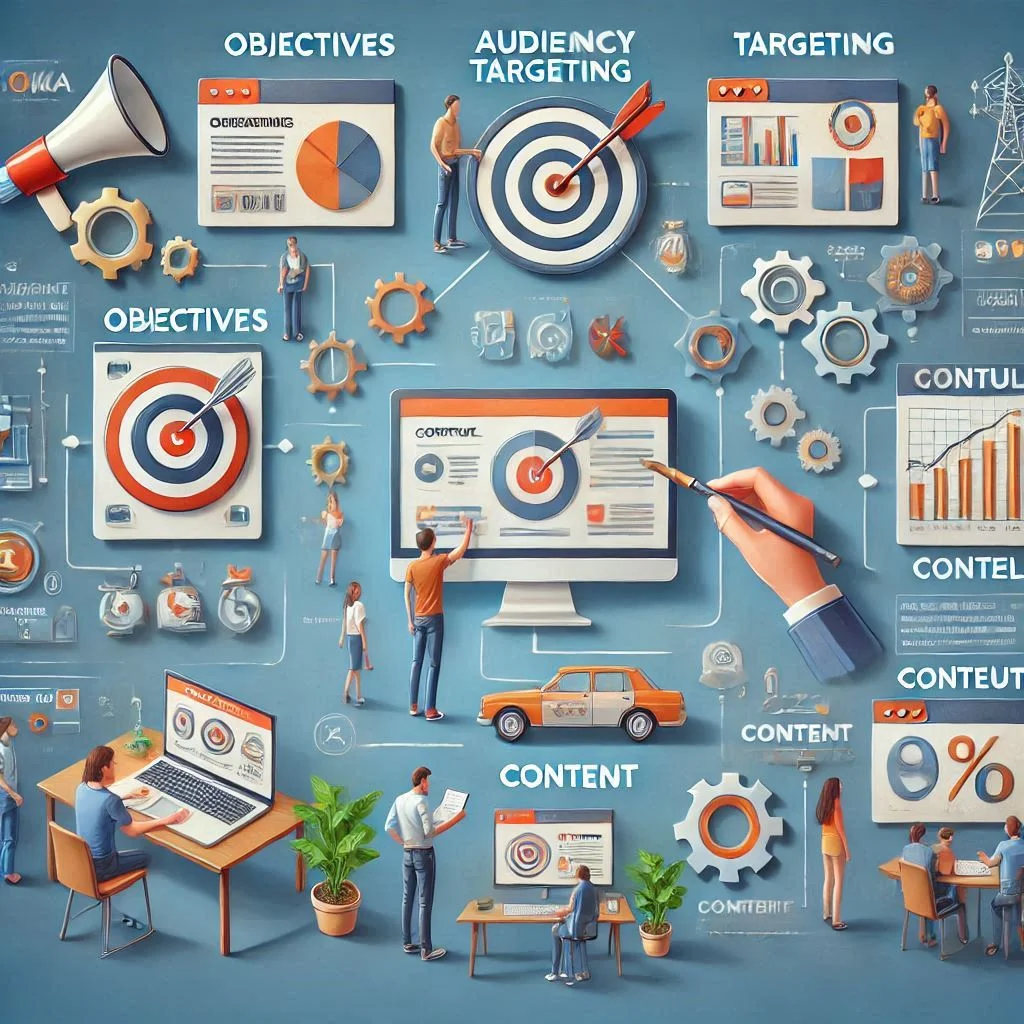
What Is a Digital Marketing Tactic?
Digital marketing tactics are the individual actions or tools used to execute a broader strategy. They are specific, actionable steps designed to achieve strategic objectives.
Examples of Digital Marketing Tactics:
- Using Long-Tail Keywords: Enhances SEO by targeting niche queries.
- A/B Testing: Optimizes email subject lines or ad creatives to improve performance.
- Retargeting Ads: Re-engages users who previously interacted with your brand.
- Interactive Content: Quizzes, polls, and infographics to boost engagement.
Difference Between Strategy and Tactic:
- A strategy outlines the overarching plan.
- A tactic focuses on the execution of specific elements within that plan.
Significance: Tactics allow businesses to experiment, adapt, and refine their strategies for optimal results.
Conclusion
Digital marketing strategies are the cornerstone of successful online businesses in today’s competitive landscape. From understanding the fundamentals to leveraging advanced technologies and adapting to changing consumer behaviors, crafting a robust strategy is crucial for long-term growth and success. By exploring various tactics, integrating emerging trends, and focusing on measurable objectives, businesses can create tailored campaigns that drive engagement, conversions, and brand loyalty. With the insights and steps provided in this guide, you’re now equipped to build and refine a digital marketing strategy that meets your goals and future-proofs your business. Embrace innovation, stay adaptable, and let your strategy evolve alongside the ever-changing digital landscape.

